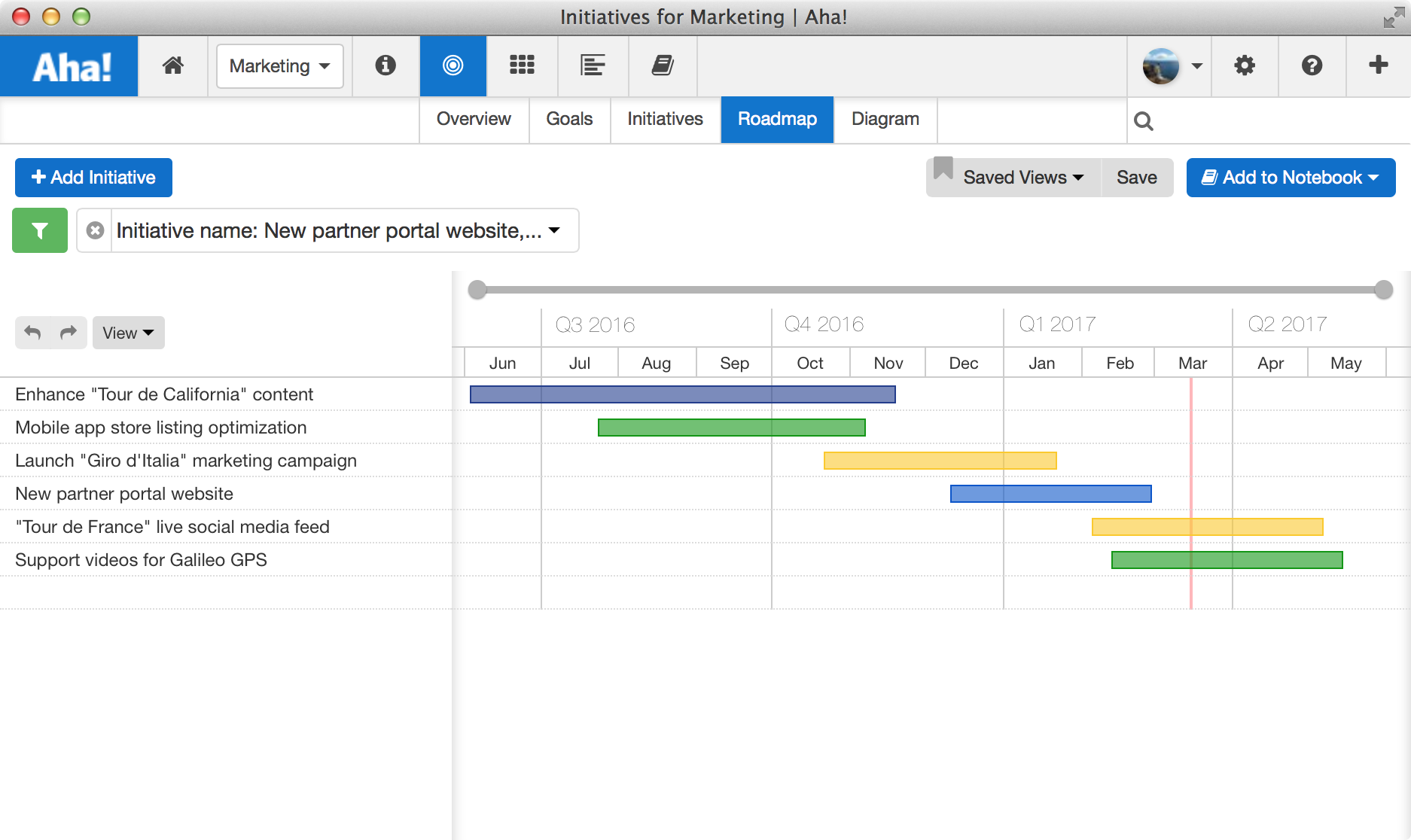
5 Easy Steps to Build Your First Marketing Roadmap
Marketing teams need a strategy. Your strategy tells you where to focus, like how to adapt when there aren’t enough dollars in the budget to advertise everywhere. And as marketing continues to become more complex, strategic planning becomes that much more important.
Strategy helps you say “no” in the face of 100 potential options. You are probably thinking, “Well, that sounds great — but how do you make that strategy happen in the midst of everything else?” Here’s the good news: you can lead your team with conviction by first building a marketing roadmap.
Roadmaps show everyone on your team and in your organization what your high-level strategy is and how you plan to achieve it through goals and initiatives. Your roadmap keeps everyone on the same page by offering ongoing visibility.
Creating your first marketing roadmap does not have to be painful. Here are five easy steps to help you get started. The suggestions here can be achieved within Aha! You can also use a spreadsheet or Word doc if you’d prefer:
Set goals Goals create a crucial bridge between your brilliant plans and how you will execute them. They enable you to focus your team on the top three to five business drivers that you want to accomplish over the next three to 12 months.

These goals that you set for your marketing strategy should be actionable and measurable. They should also be reasonably easy to track so you know how your team is performing against them.
Create initiatives Initiatives allow you to specify key work that must be completed to achieve your marketing goals. Think of these efforts as high-level projects, such as creating more robust reporting and analytics.

These initiatives should be completed within a specified period of time — even if that timeframe is a few months or longer. Initiatives are more high-level, so it is natural that they will take more time to complete than goals.
Define personas You know you have a standout product when customers want to buy it. But do you know who your customers are? It sounds like an obvious question. But knowing the answer is essential. So, you should define your personas as part of building your marketing roadmap. They act as a framework for the rest of your marketing efforts.

Personas are fictional characters created to represent the different user types that might use a site, brand, or product in a similar way. They should all be based on real conversations that you have had with real customers. And those conversations should have addressed what each customer is trying to achieve, why these customers are trying to achieve their goals, and how each customer will be impacted if they cannot achieve their goals.
Build campaigns Once you have set your marketing strategy, it is time to get the work done. And it is just as critical to track the work you are doing as it is to track your strategy (as we already discussed in this post).

Campaigns play a huge role in marketing. But it is tough to measure their success without connecting them back to your strategy. That’s why incorporating your campaigns into your marketing roadmap is essential. It allows you to link each campaign back up to business-level goals.
Share progress Recent research shows that 52 percent of marketers feel like they are blindly creating campaigns without any idea how it affects other parts of the business. That is why it’s critical for you to close the loop by capturing and sharing data regularly with other cross-functional teams.
So, once your roadmap is planned out, make sure you proudly share it with your organization on a regular basis to keep everyone up to date. This includes your own marketing team as well as the sales, product, engineering, and design teams.
Roadmaps keep marketing teams in sync with their cross-functional teams, business strategy, and customers. The end result is more clarity, strategic work, and measurable results.
Ultimately, we all need a roadmap. That’s because today’s customers, markets, and technologies are more dynamic and unpredictable than ever.
How do you keep your marketing team focused on what matters?




